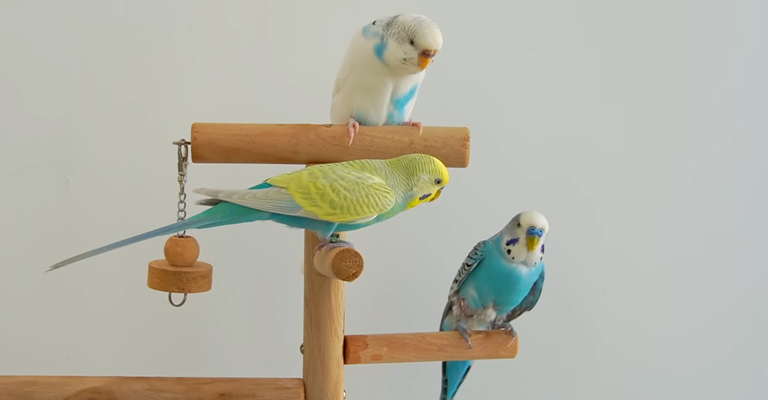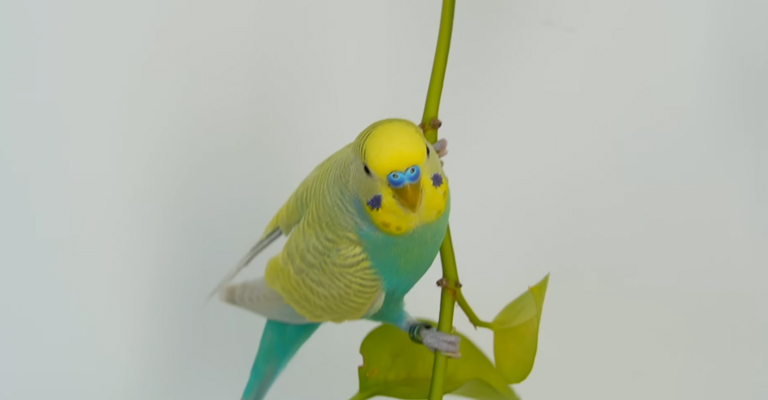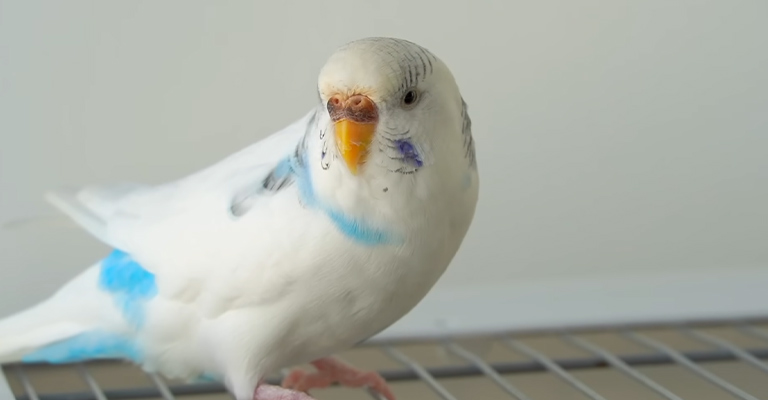Birds, with their beautiful plumage and captivating songs, have long been objects of fascination for humans. Many bird enthusiasts wonder whether these feathered creatures enjoy physical contact, such as petting. In this blog post, we will delve into the intriguing question ‘Do Birds Enjoy Being Petted?’.
Birds, with their diverse species and individual personalities, don’t have a one-size-fits-all answer to this question. Some readily embrace human touch, while others prefer to maintain a bit more distance.
The nuances of avian behavior, body language, and species-specific tendencies can shed light on the subject. We’ll explore the signs that indicate a bird’s enjoyment of petting, how to safely engage with them, and the potential risks involved. Stay focused.

Understanding Birds of Birds with Human
Birds with humans involves observing and studying avian behavior, anatomy, and ecology to gain insights into their lives. Birdwatching is a popular way for humans to connect with these feathered creatures, requiring patience and binoculars to identify species and their unique habits.
Scientific research aids in comprehending bird migration patterns, mating rituals, and communication methods. Understanding their role in ecosystems helps humans appreciate their significance in maintaining ecological balance.
Furthermore, conservation efforts are essential to protect avian species threatened by habitat loss and climate change. Educating people about birds fosters empathy and encourages responsible stewardship.
So, humans can better understand birds through observation, research, and conservation efforts, fostering a deeper connection with these remarkable creatures that share our world.
Bird Preferences for Physical Contact
Birds have varying preferences when it comes to physical contact, influenced by their species, individual personalities, and the context in which they interact with humans. Some general patterns include:
No Physical Contact
Many wild birds are naturally skittish and prefer not to be touched by humans. They feel safer at a distance and may become stressed if approached too closely.
Hand-Taming
Some birds, like parrots and budgerigars, can be hand-tamed and enjoy gentle physical contact with their owners. They may tolerate petting, scratching, or perching on a person’s finger or shoulder.
Species Variability
It’s essential to recognize that each bird species is different. Some may be naturally more affectionate and open to physical contact, while others are more reserved.
Trust Building
Establishing trust through consistent and gentle interactions is key to any positive physical contact with birds. Patience and respect for their boundaries are crucial.
Body Language
Pay attention to a bird’s body language. If they show signs of stress or discomfort (fluffing up feathers, hissing, biting), it’s essential to back off and respect their boundaries.
Social Bonding
Some species, like doves and pigeons, are known for their desire to be close to others and may enjoy physical contact with their own kind and humans they trust.
The willingness of a bird to engage in physical contact with humans varies widely and depends on the species and individual bird. It’s vital to approach each bird with sensitivity and respect for their preferences and boundaries to ensure their well-being and your safety.
Signs That Birds May Enjoy Being Petted

Birds, like other animals, can exhibit signs that indicate they may enjoy being petted or touched by their human caregivers. However, it’s crucial to remember that individual preferences can vary among birds. Here are some general signs that a bird might be comfortable with physical contact:
Preening Behavior
Birds often preen themselves by nibbling at their feathers or adjusting their plumage. If a bird allows you to gently stroke its feathers and it responds by becoming more relaxed or preening in your presence, it may enjoy being petted.
Relaxed Body Language
A bird that is comfortable with petting will typically exhibit relaxed body language. This includes a slightly puffed-up appearance, closed or half-closed eyes, and a calm demeanor.
Gentle Vocalizations
Some birds may make soft, contented sounds while being petted, such as purring or quiet chirps. These vocalizations can be a sign of pleasure.
Leaning In
If a bird leans into your touch or moves closer to your hand when you’re petting it, it’s a positive sign that it enjoys the interaction.
Raised Feathers
Birds might raise their feathers slightly when being petted, especially in areas they particularly enjoy being touched, like the head or neck.
Voluntary Approach
Birds that willingly approach you and invite interaction by hopping on your hand or finger are likely comfortable with being touched.
Trust and Bonding
Birds that have formed a strong bond with their caregivers are more likely to enjoy physical contact. Trust-building and a positive relationship are essential.
No Signs of Stress
It’s crucial to monitor the bird for signs of stress or discomfort. If the bird becomes agitated, flaps its wings rapidly, or displays aggressive behavior, stop petting immediately.
Remember that not all birds will enjoy being petted, and individual preferences can vary. Always approach a bird with gentleness and respect for their boundaries, and pay close attention to their body language to ensure they are comfortable and content with the interaction.
How to Safely Pet a Bird?

Petting a bird can be a rewarding experience, but it’s essential to do it safely to ensure the bird’s well-being and your own safety. Here are steps to safely pet a bird:
Gain Trust
Before attempting to pet a bird, establish trust and a positive relationship. Spend time near the bird, talk to it softly, offer treats, and allow it to get used to your presence.
Approach Slowly
Approach the bird slowly and calmly. Sudden movements or loud noises can startle and stress the bird.
Hand Washing
Wash your hands thoroughly with soap and warm water before handling the bird. This reduces the risk of transferring germs or oils from your skin to the bird’s feathers.
Choose the Right Spot
Birds have preferences for where they like to be touched. Most enjoy gentle strokes on the head, neck, or back. Pay attention to the bird’s body language to find its preferred spot.
Use a Soft Touch
Use gentle and slow movements when petting the bird. Avoid squeezing, pinching, or pressing too hard. Birds have delicate bones and sensitive skin.
Watch for Signals
Pay close attention to the bird’s body language. If the bird appears uncomfortable, agitated, or tries to move away, stop petting immediately.
Respect Boundaries
Not all birds will enjoy being petted. Respect the bird’s boundaries and only continue if it appears to be enjoying the interaction.
Avoid Sensitive Areas
Avoid touching sensitive areas like the beak, wings, and legs unless you are confident that the bird is comfortable with it.
Time Limit
Keep the petting session short, especially if the bird is not used to being handled. Over time, you can gradually increase the duration as the bird becomes more accustomed to the contact.
Positive Reinforcement
Reward the bird with treats or verbal praise after the petting session to reinforce positive behavior.
Supervise Children
If children are petting the bird, closely supervise them to ensure they are gentle and respectful.
Avoid Unfamiliar Birds
Do not attempt to pet wild birds or unfamiliar birds unless you are a trained wildlife rehabilitator. Wild birds can carry diseases and may become stressed when handled by humans.
Always prioritize the well-being and comfort of the bird when attempting to pet it. Not all birds will enjoy or tolerate physical contact, so it’s essential to be patient and respectful of their individual preferences and boundaries.
Risks and Caveats While Petting a Bird
Petting a bird can be a delightful experience, but it comes with certain risks and caveats that should be considered to ensure both the bird’s well-being and your own safety. Here are some potential risks and caveats to be aware of when petting a bird:
Bite Risk
Birds have beaks designed for various purposes, including defense. Even a pet bird can bite if it feels threatened or uncomfortable. Be cautious around the bird’s beak and pay attention to its body language to avoid being bitten.
Injury Risk
Birds have delicate bones, and excessive pressure or mishandling can result in injuries. Avoid squeezing or gripping the bird too tightly.
Stress and Anxiety
Handling a bird that is not comfortable with physical contact can cause stress and anxiety. Birds may become agitated, which can negatively affect their health.
Feather Plucking
Some birds may develop a habit of feather plucking or self-mutilation if they are stressed or handled too roughly. Be mindful of this potential behavior.
Disease Transmission
Birds can carry diseases that can be transmitted to humans, such as avian influenza and psittacosis. Wash your hands thoroughly before and after handling a bird to reduce the risk of disease transmission.
Allergic Reactions
Some people may be allergic to bird dander, feathers, or saliva. Be aware of any allergies you or others may have before handling a bird.
Escape Risk
Birds are known for their ability to fly and may try to escape when handled. Always ensure you are in a safe, enclosed area when interacting with a bird.
Sensitivity to Pressure Points
Birds have specific pressure points on their bodies, and excessive pressure in these areas can cause discomfort. Be cautious around these points, such as the wings and legs.
Aggressive Behavior
Some birds may become territorial or aggressive during certain times, such as breeding season. Be aware of the bird’s behavior and mood to avoid potential aggression.
Injury to the Bird
Mishandling or excessive petting can lead to injury or discomfort for the bird. Always prioritize the bird’s well-being.
Individual Variability
Each bird is unique, and what one bird enjoys, another may not. Pay attention to the individual preferences and boundaries of the bird you are interacting with.
Supervision
Always supervise children when they are handling or petting a bird to ensure they are gentle and respectful.
It’s important to approach petting or handling a bird with caution, especially if you are unfamiliar with the specific bird’s behavior and preferences. Take your time to build trust and a positive relationship with the bird, and be prepared to stop or adjust your approach if the bird shows signs of discomfort or stress.
FAQs
No, not all birds enjoy being petted. Individual preferences vary widely among species and individual birds. It’s essential to respect their boundaries and observe their body language to determine if they are comfortable with physical contact.
Watch for signs of relaxation, such as closed eyes, gentle vocalizations, and a calm demeanor. Birds that voluntarily approach your hand and lean in for petting are more likely to enjoy the interaction.
Many birds enjoy being petted on the head, neck, or back. However, the preferred areas can vary between species. It’s crucial to pay attention to the bird’s response to determine its favorite spots.
Yes, excessive or forceful petting can stress a bird. It’s vital to be gentle, respect their boundaries, and stop if the bird shows signs of discomfort. Not all birds will tolerate or enjoy physical contact.
Yes, gentle and respectful petting can strengthen the bond between a bird and its caregiver. It can be a way to build trust and provide companionship, but it should be done in a way that considers the bird’s comfort and preferences.
Wrapping Up
In the world of pet birds and feathered companionship, the question of whether birds enjoy being petted remains a topic of curiosity and exploration. While there is no definitive answer that applies universally to all birds, it’s clear that individual preferences play a significant role.
A bird’s cues, building trust, and respecting their boundaries are essential steps toward nurturing a positive and affectionate relationship with these captivating avian companions.
Whether your feathered friend relishes physical contact or prefers a more hands-off approach, the key is to cherish and appreciate their unique personalities and the connection you share. Best wishes.